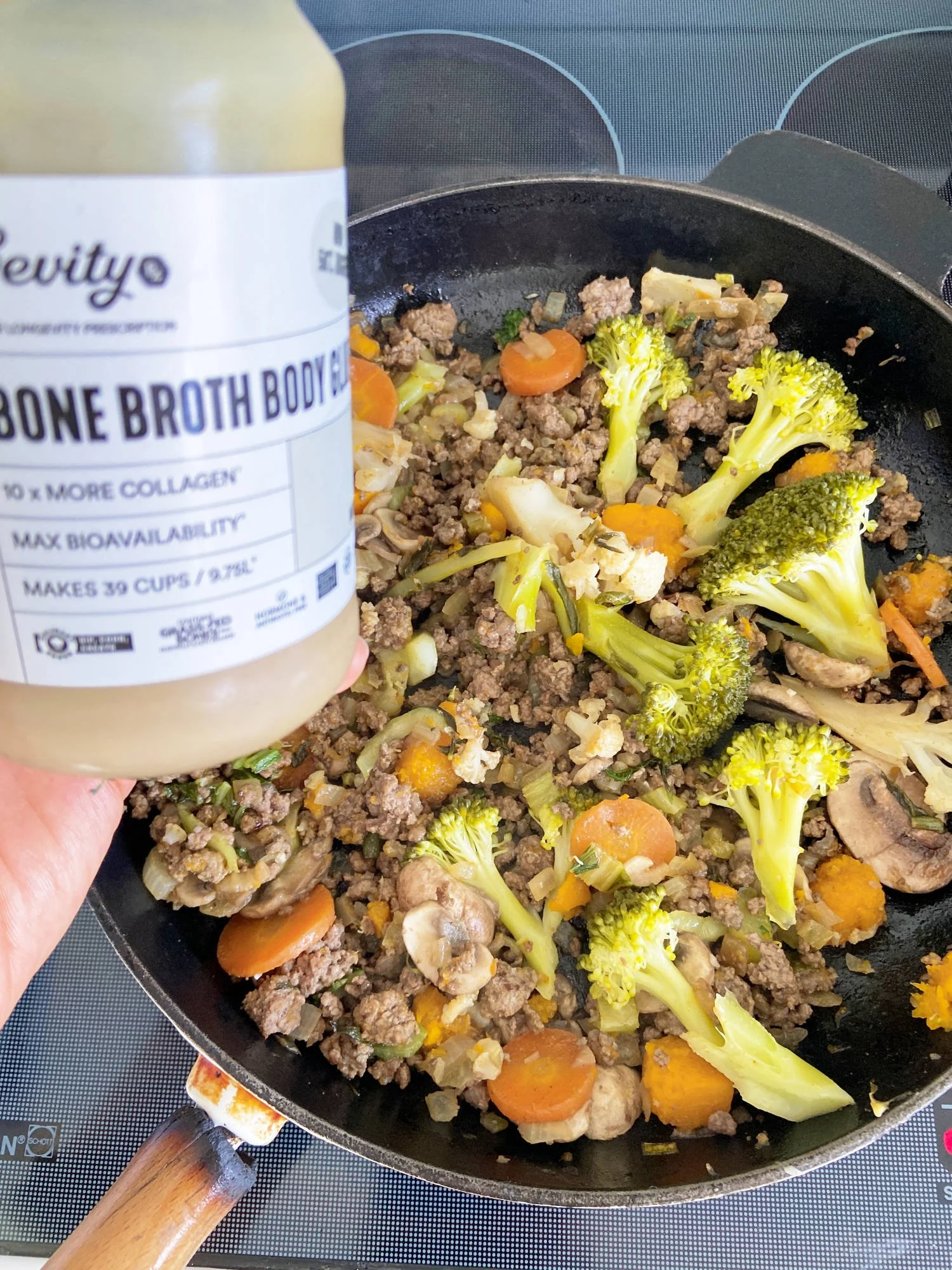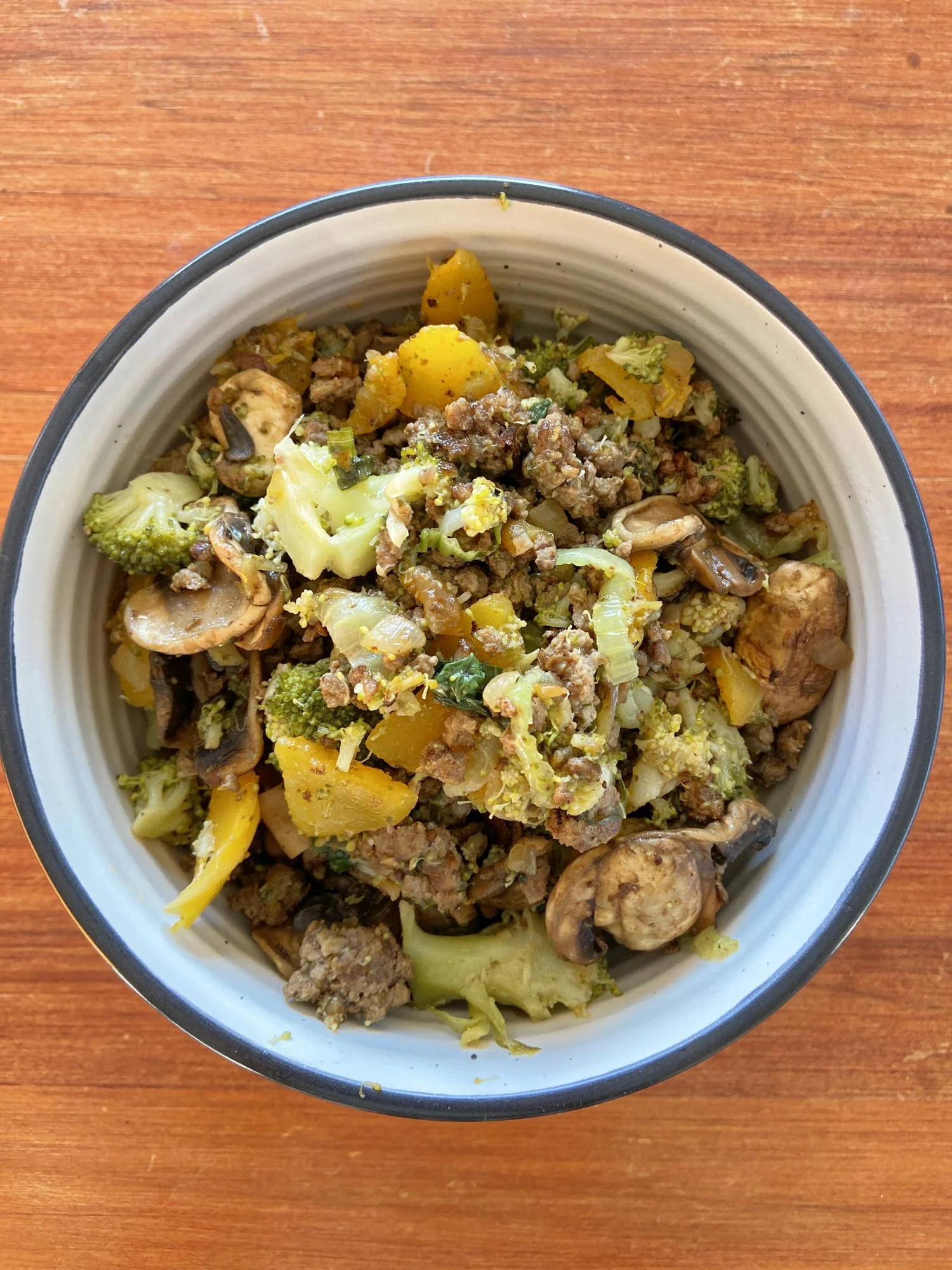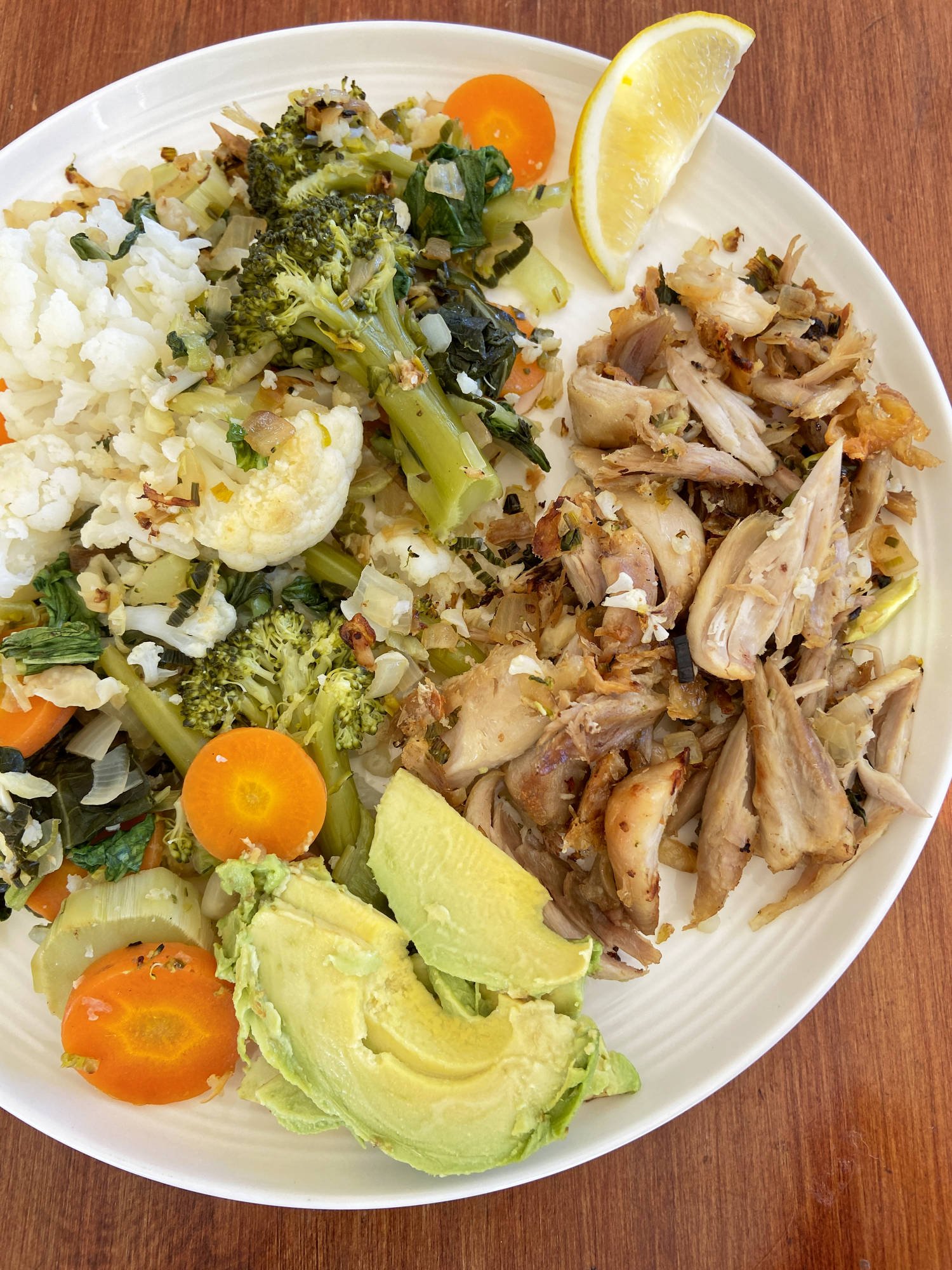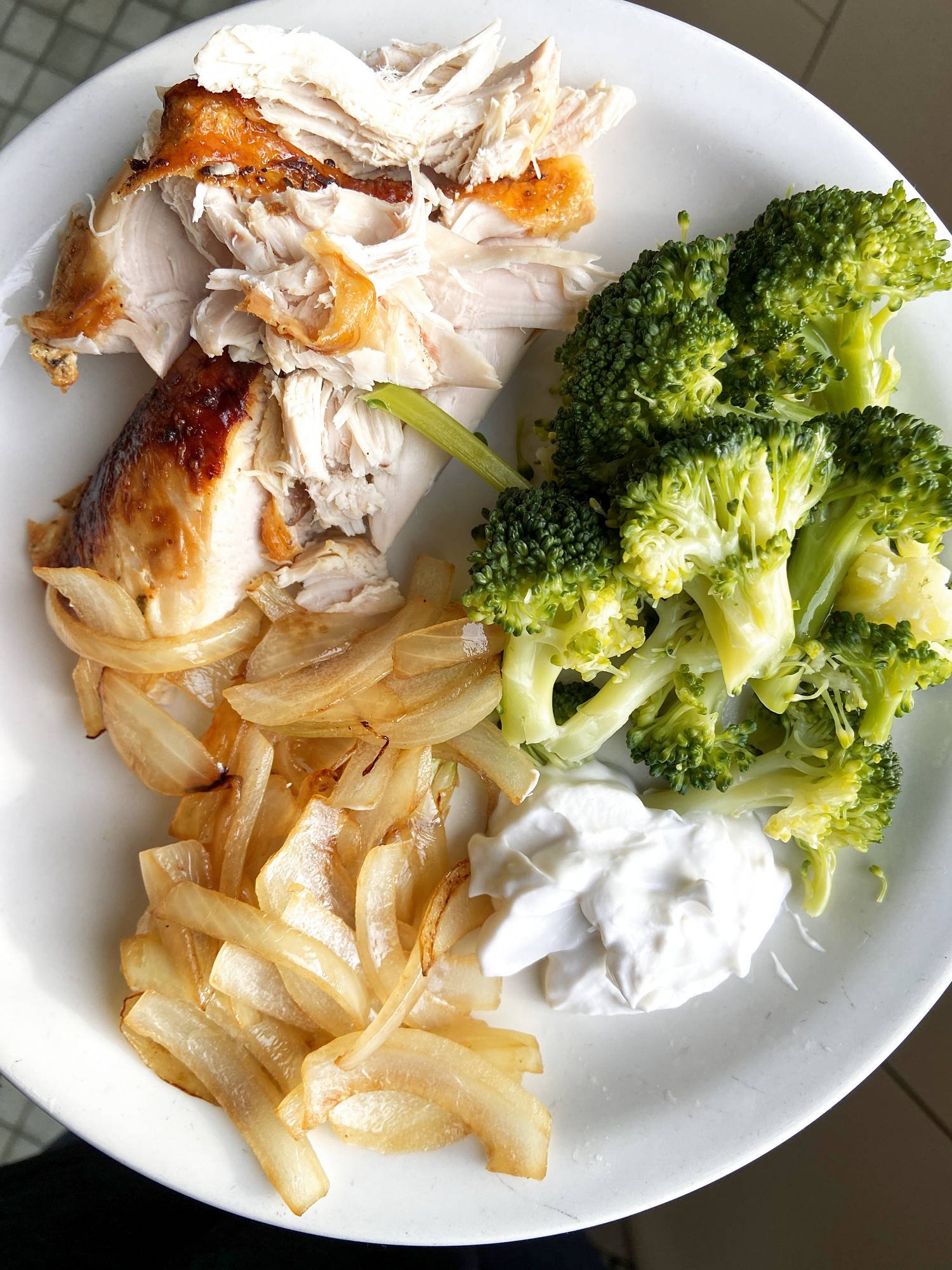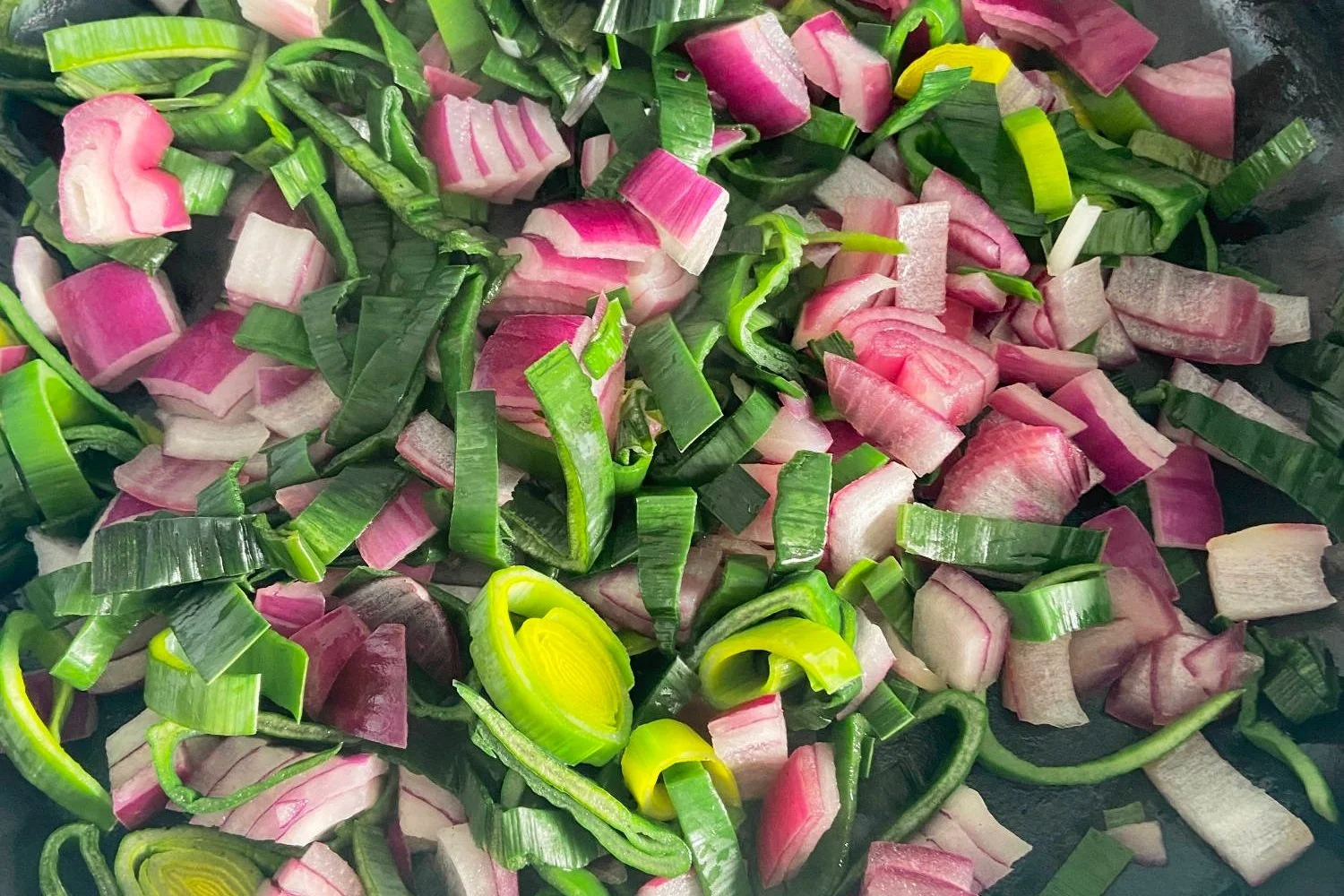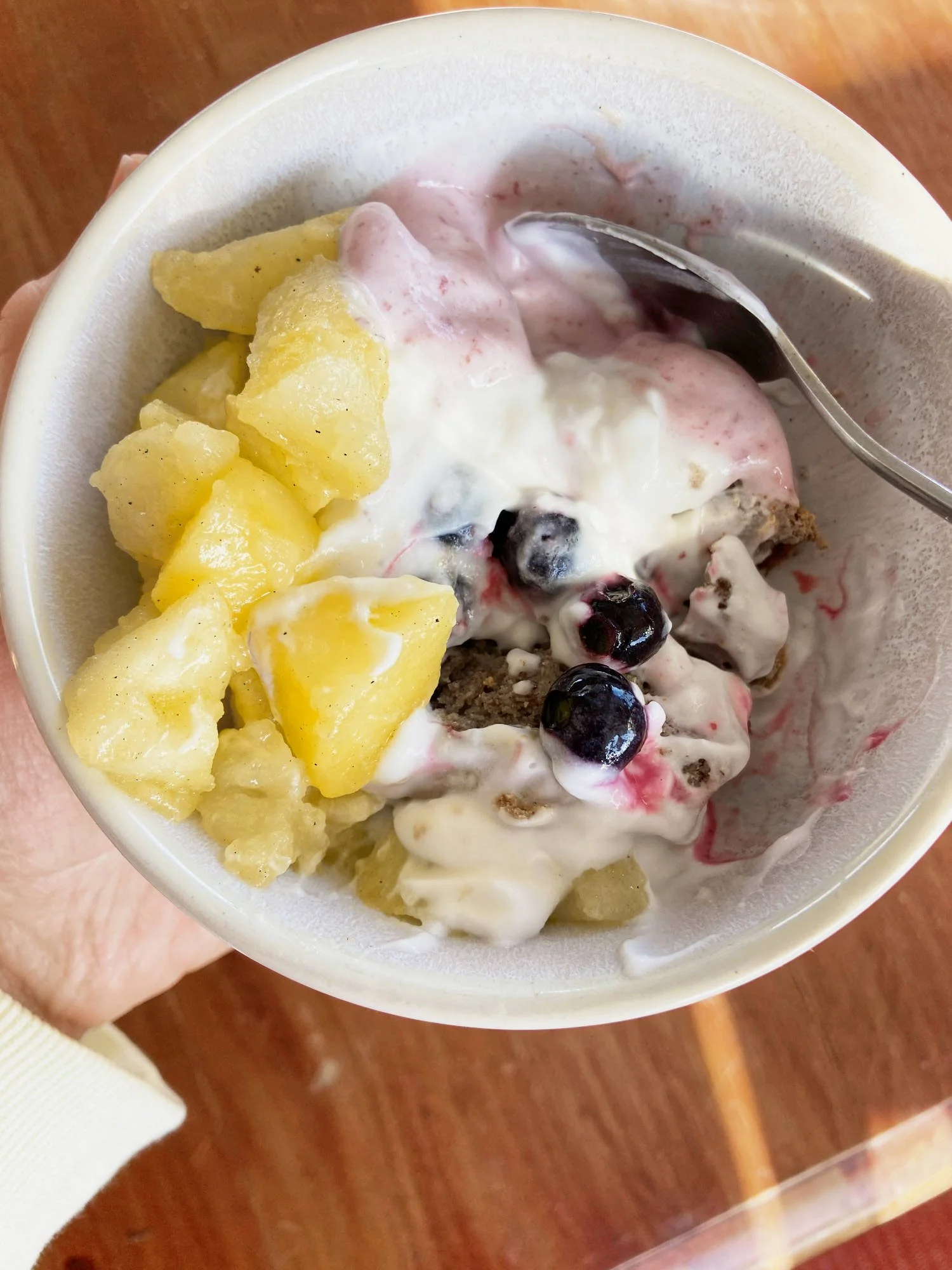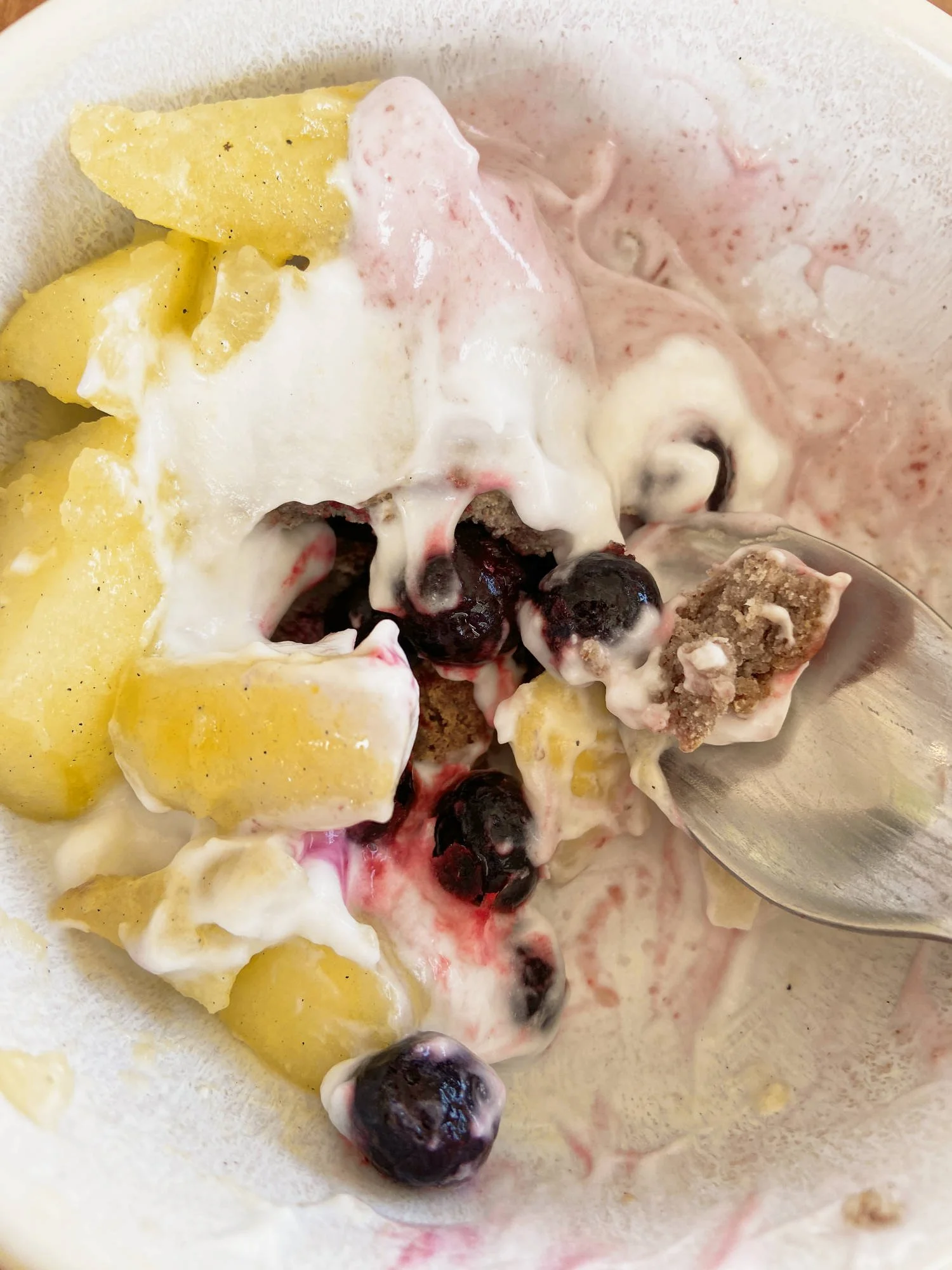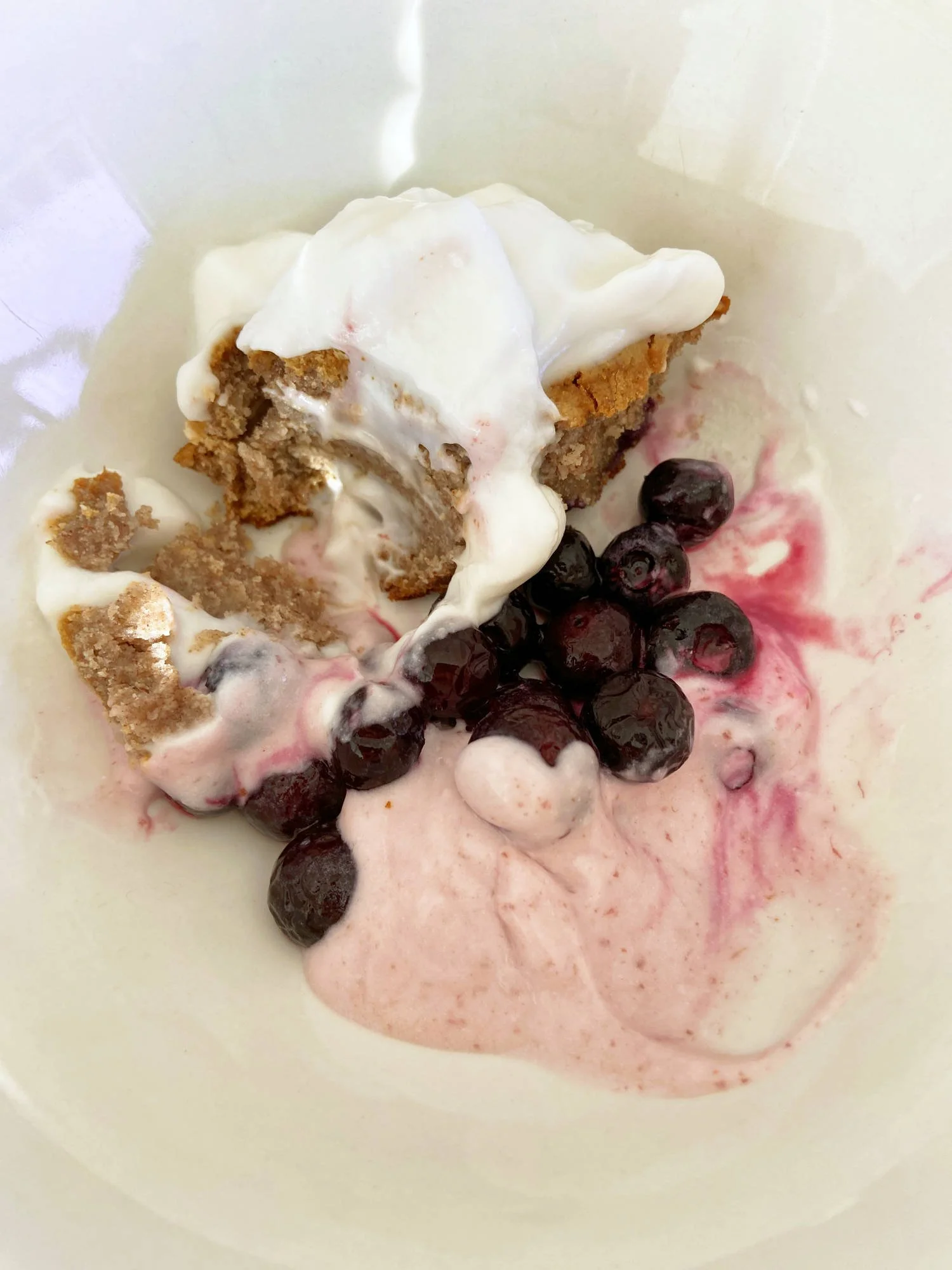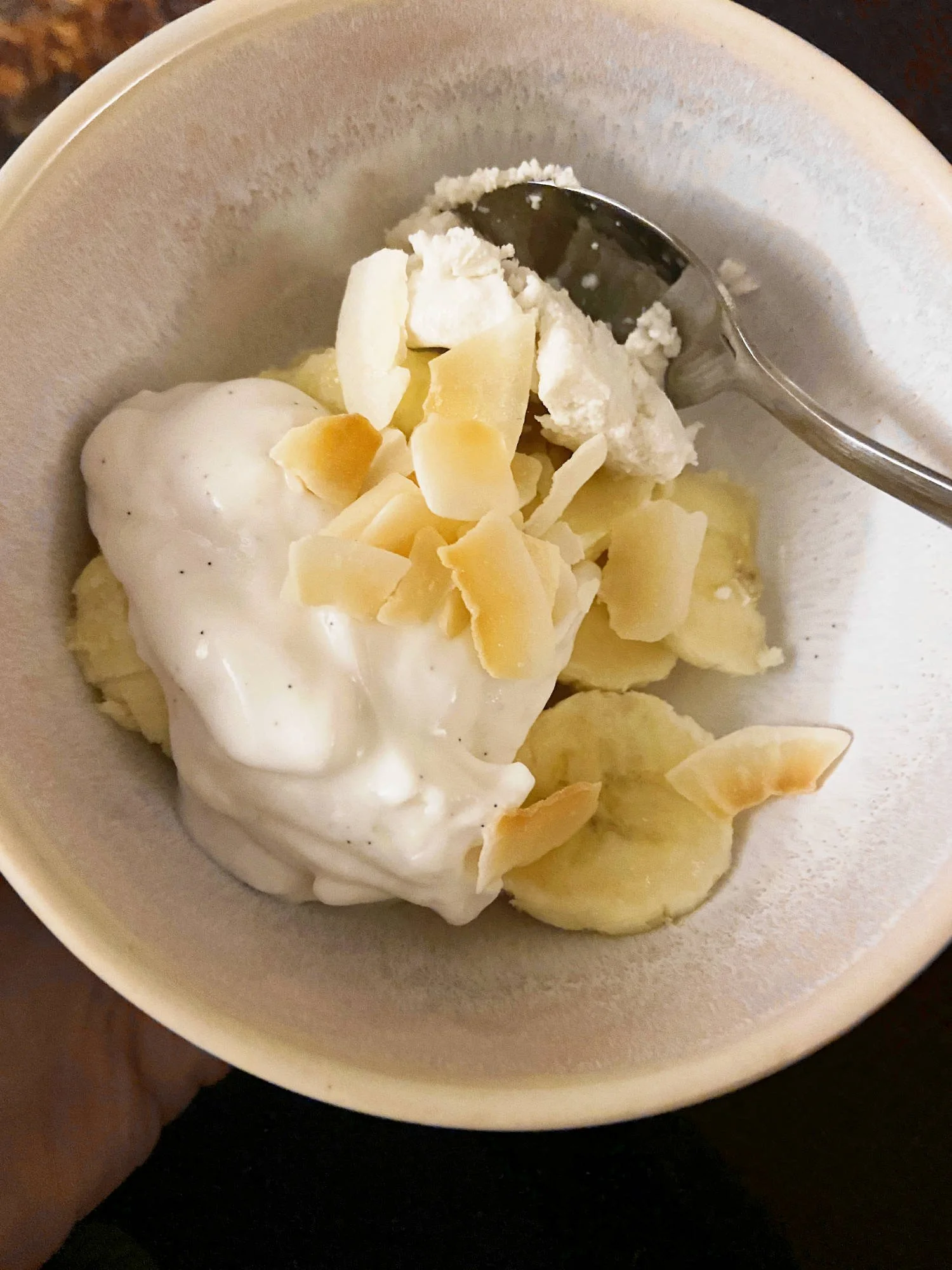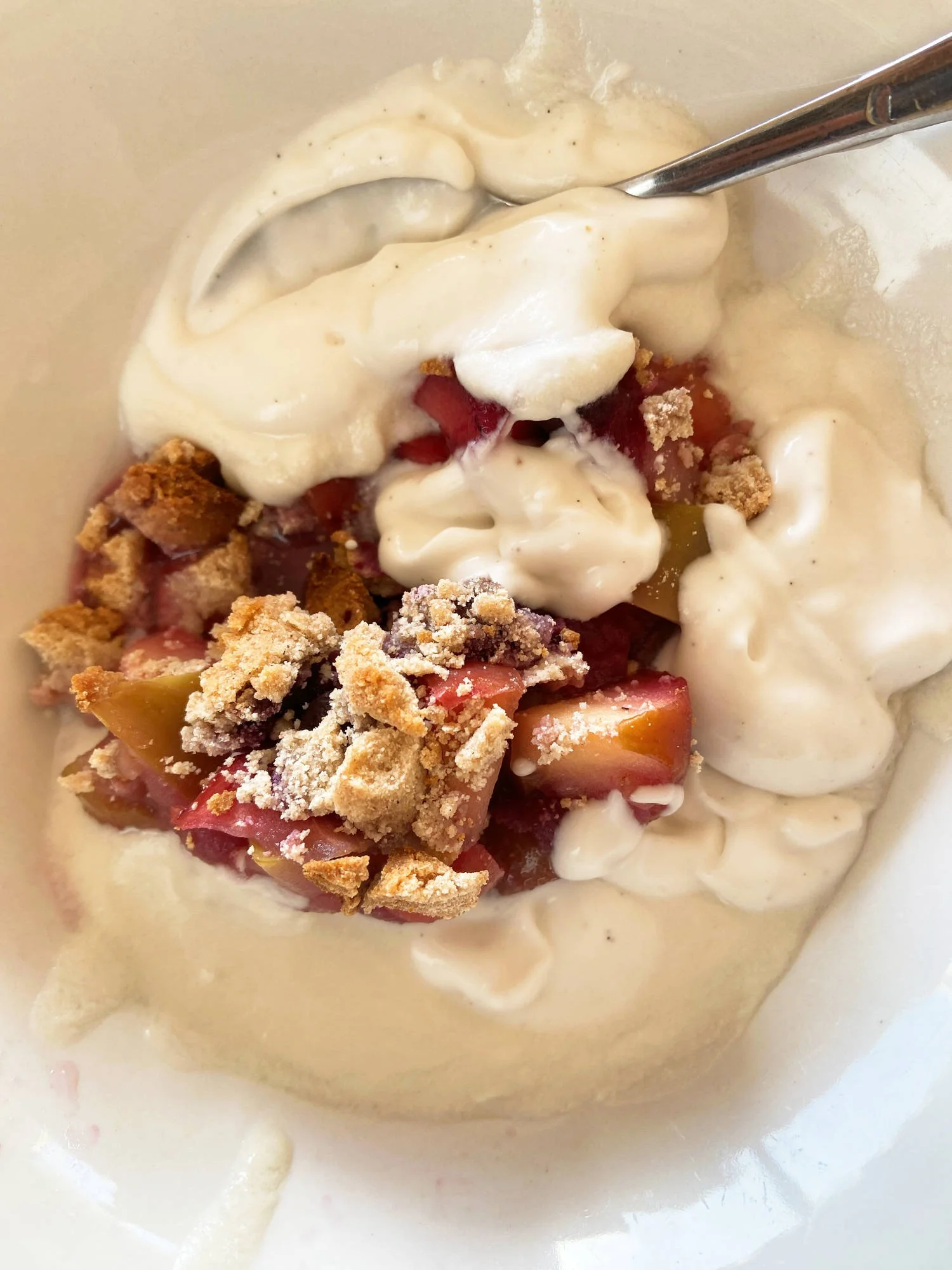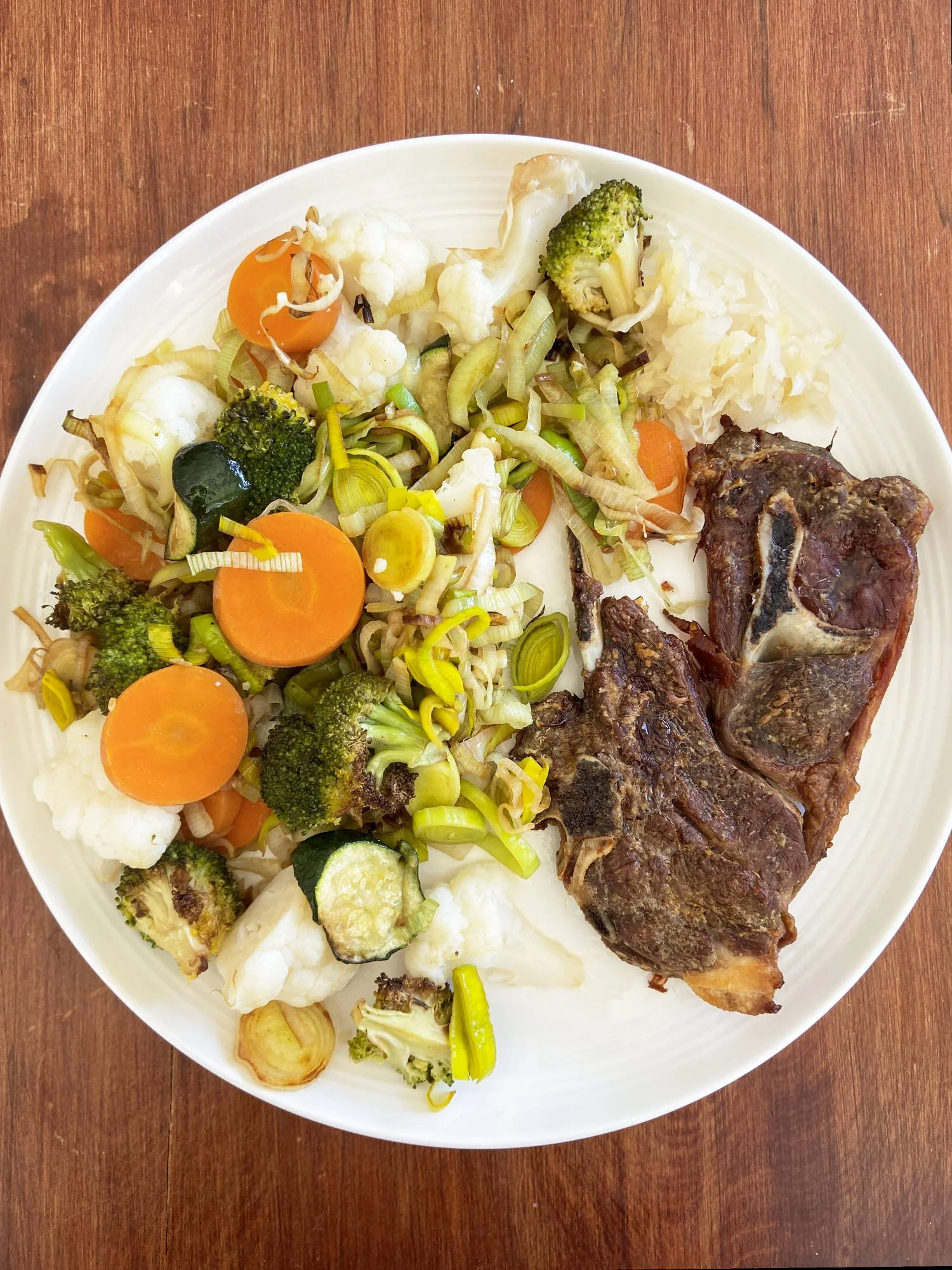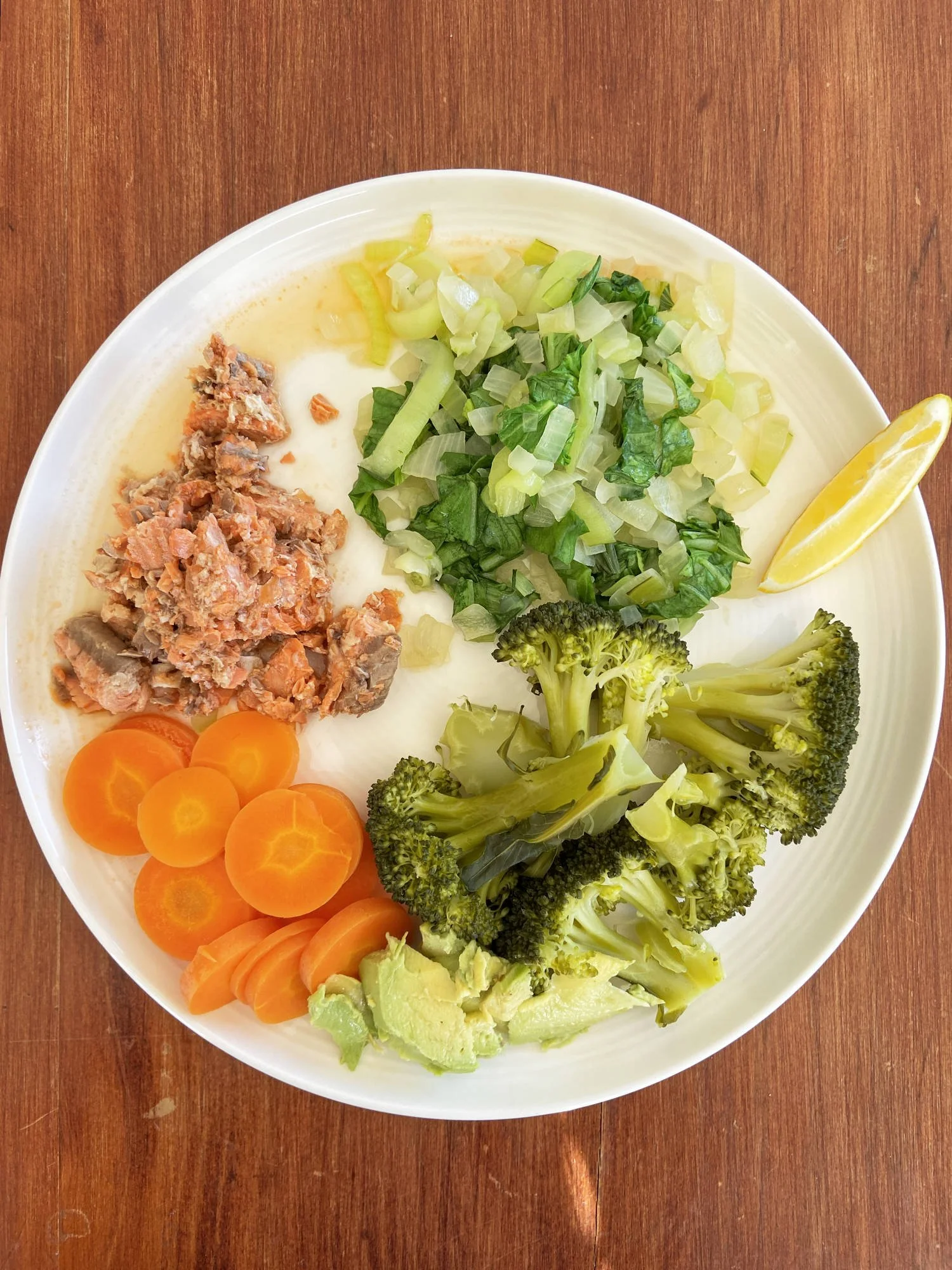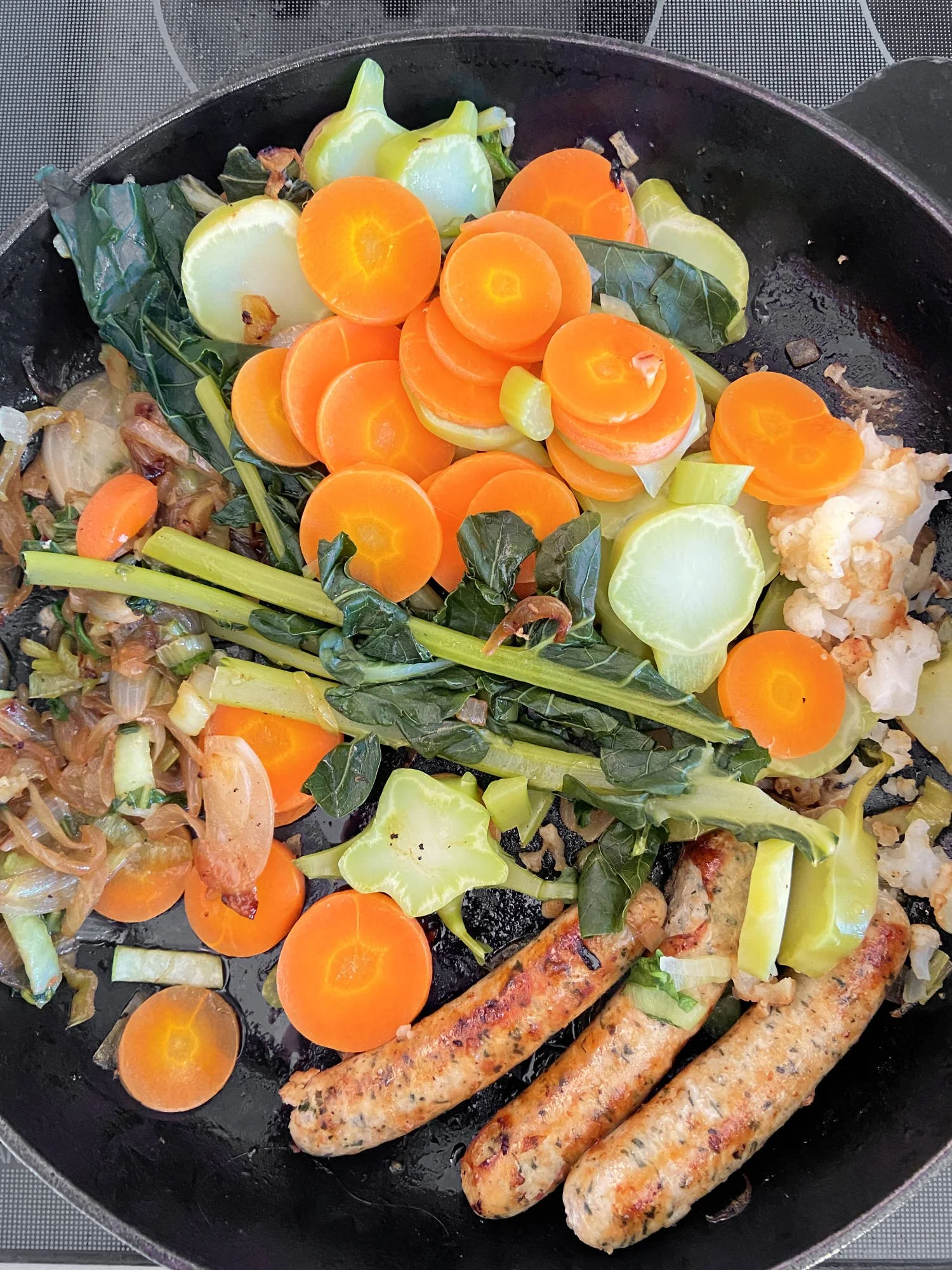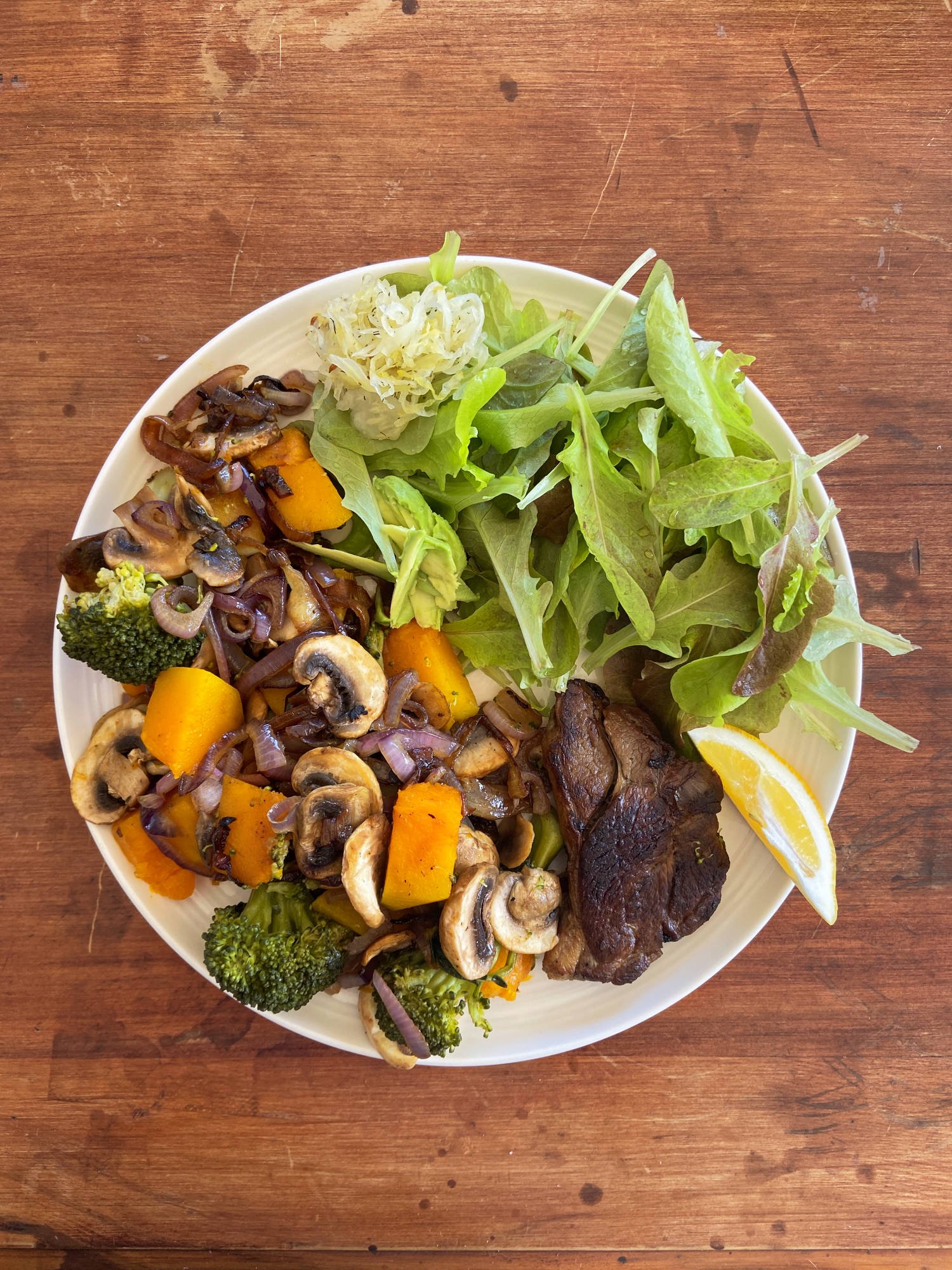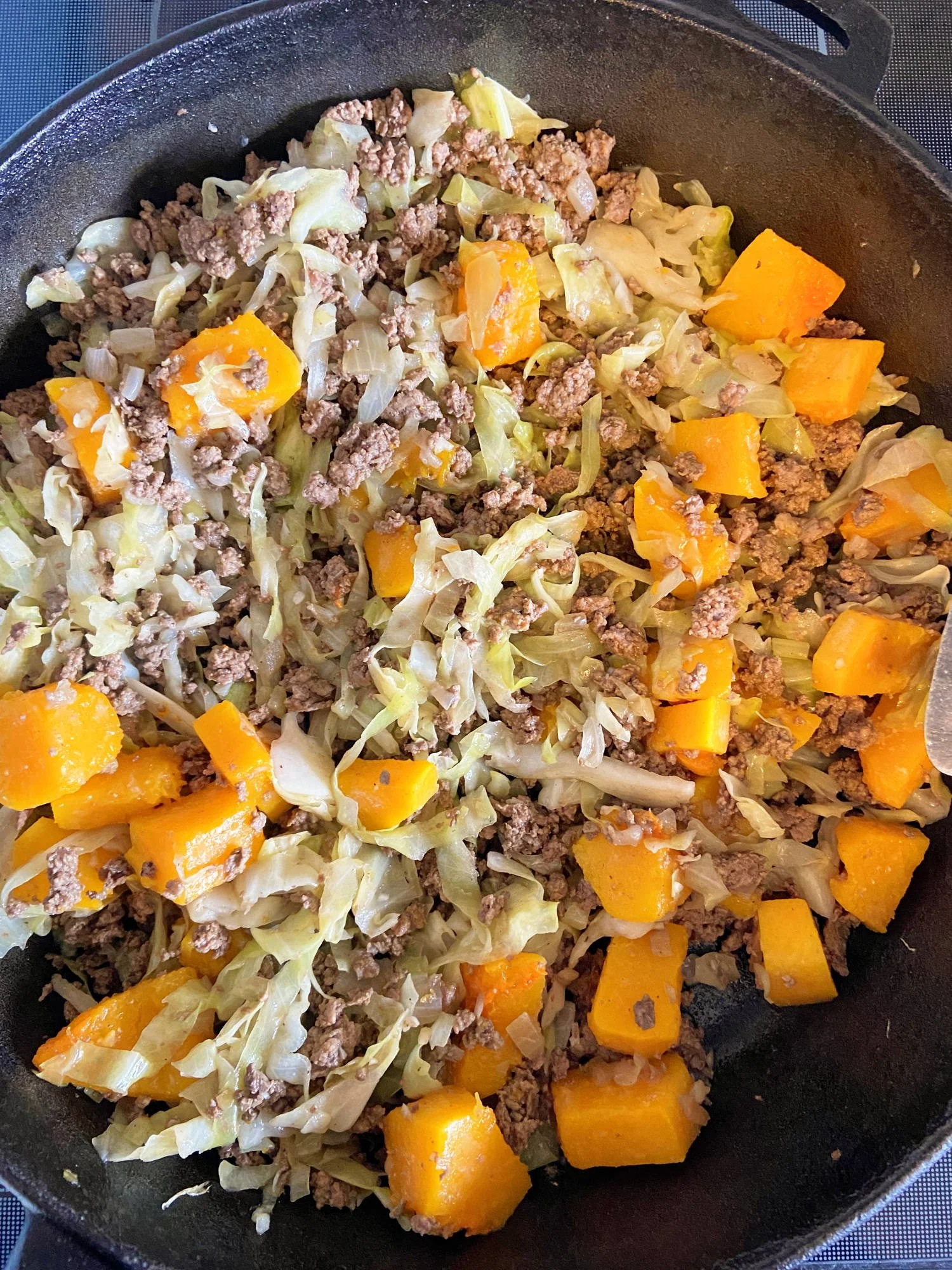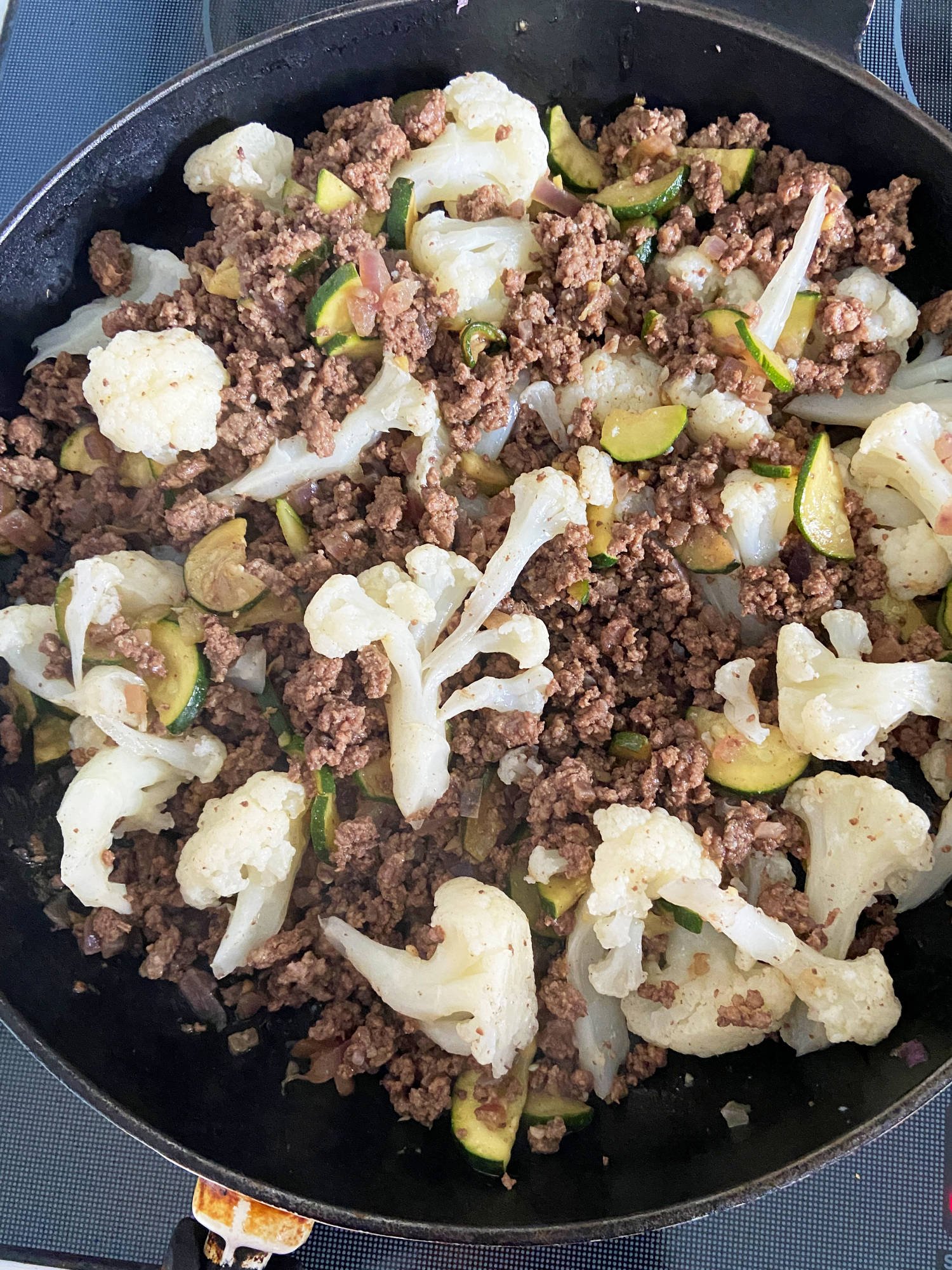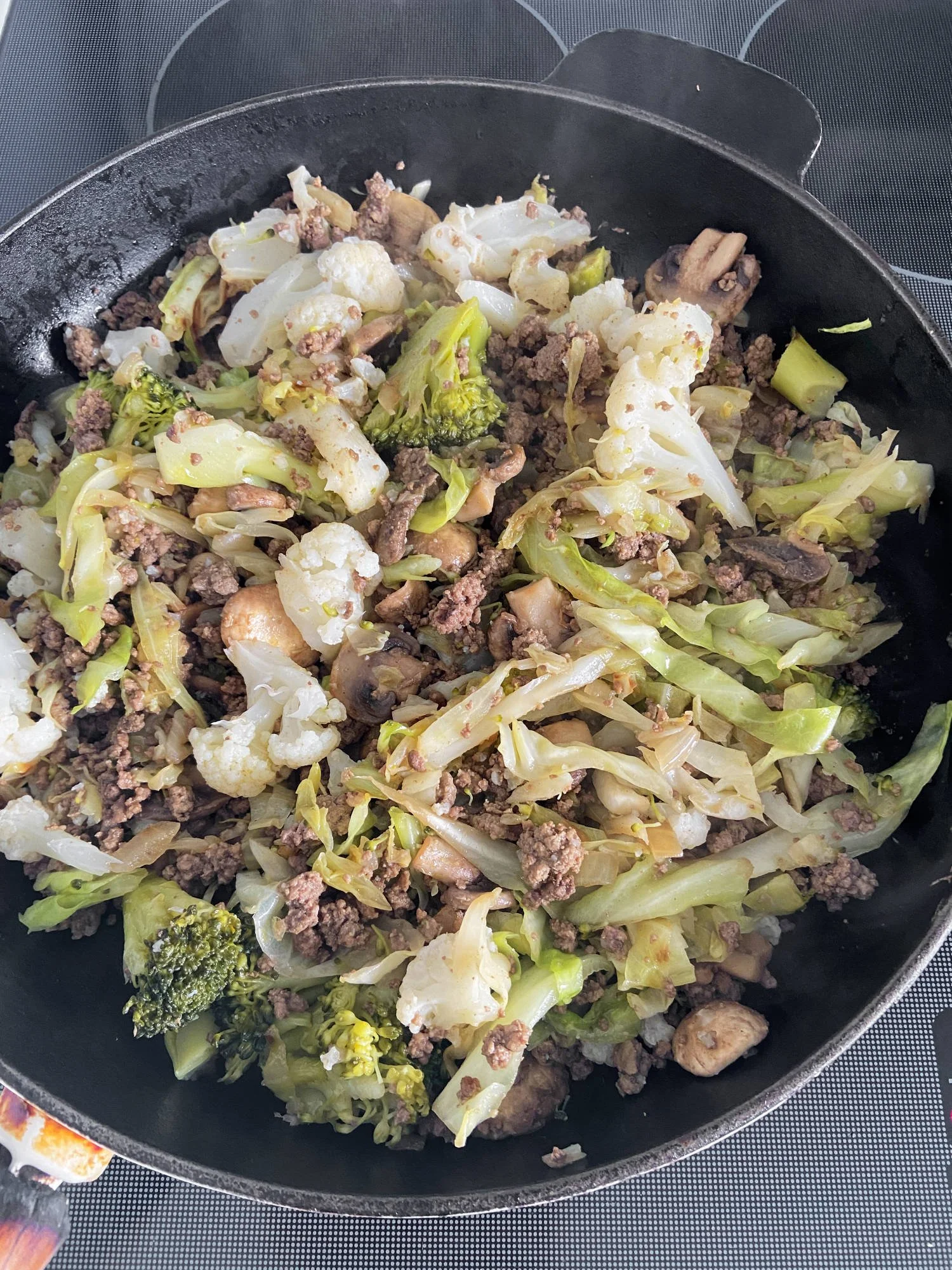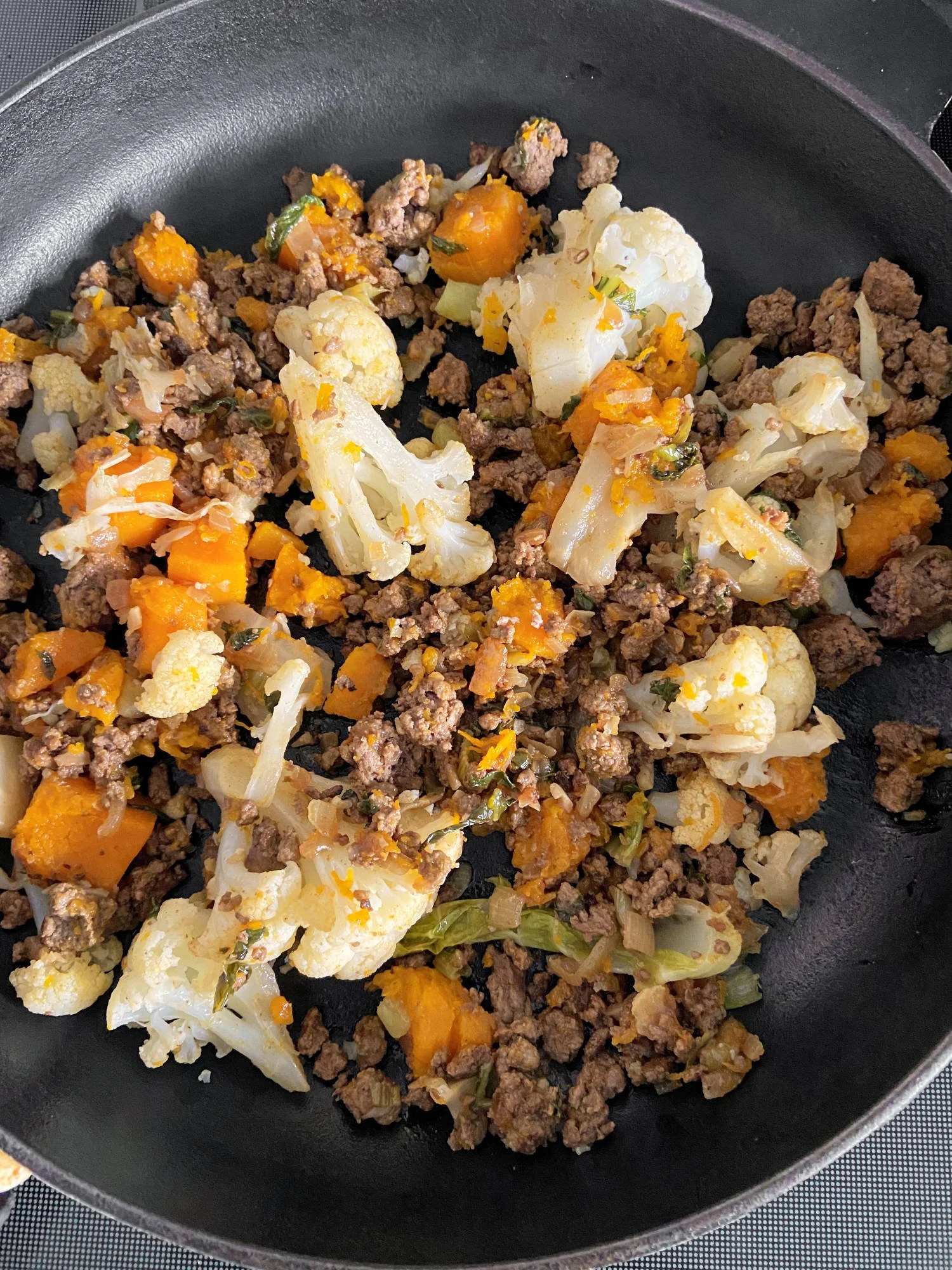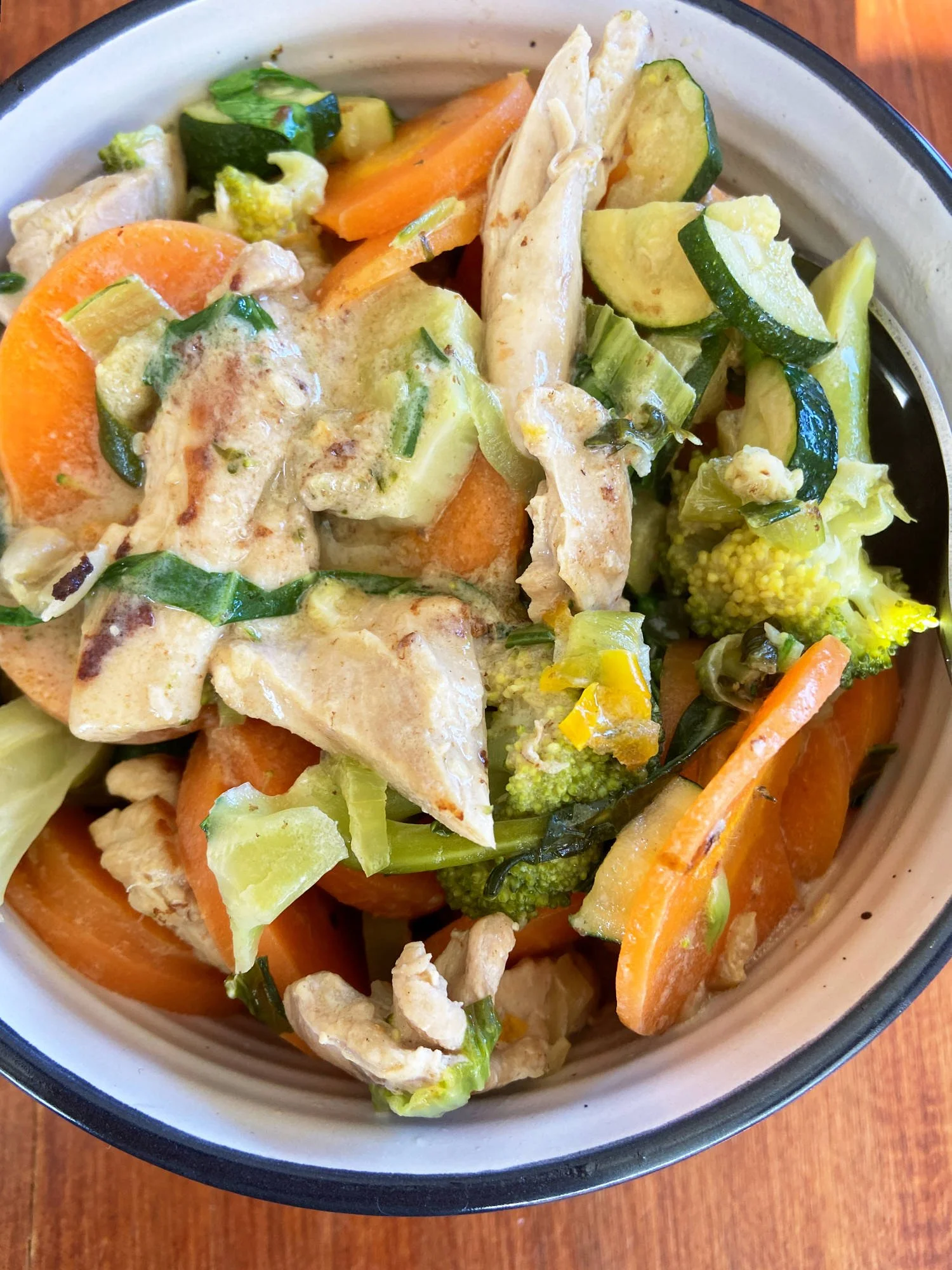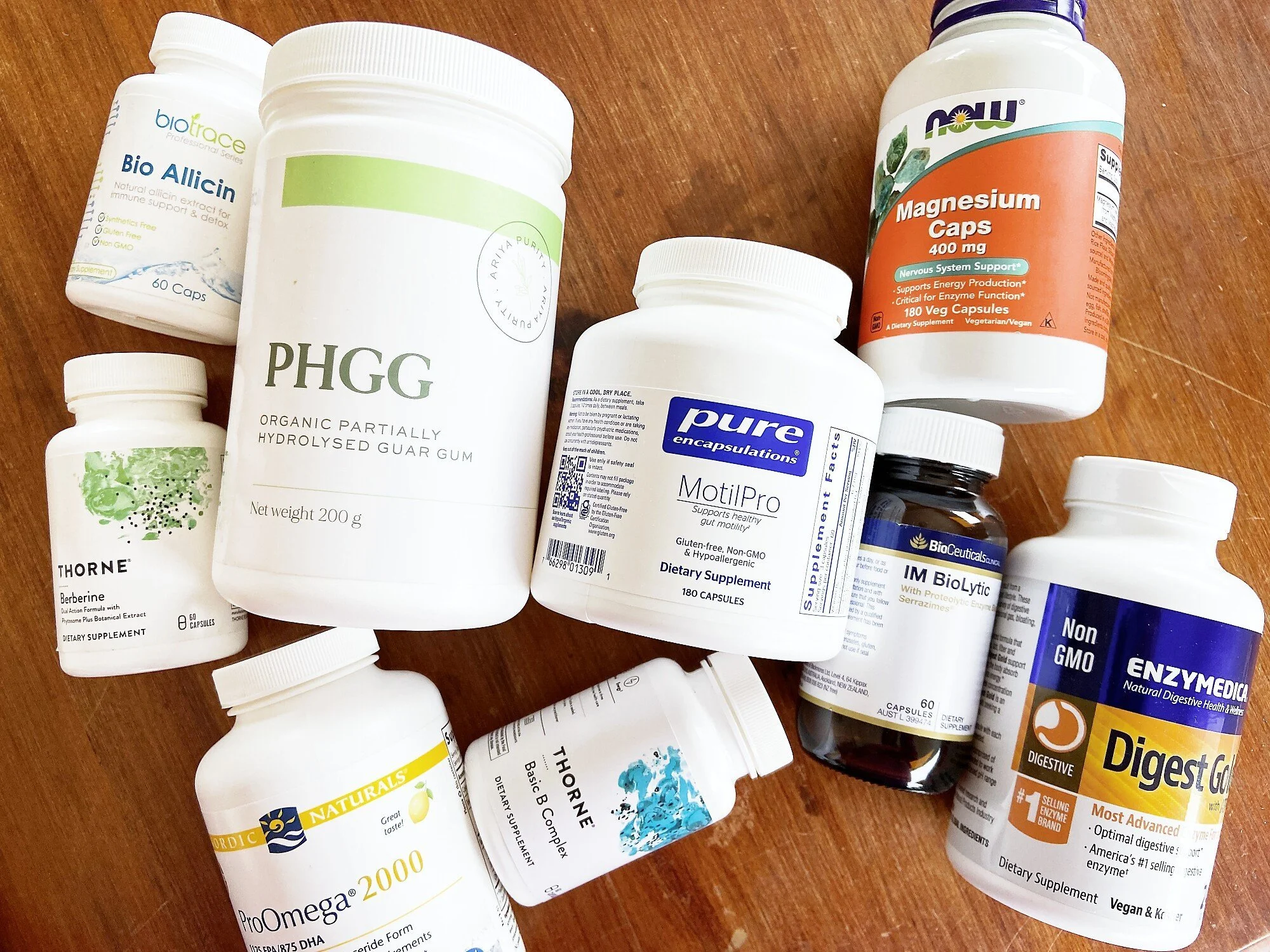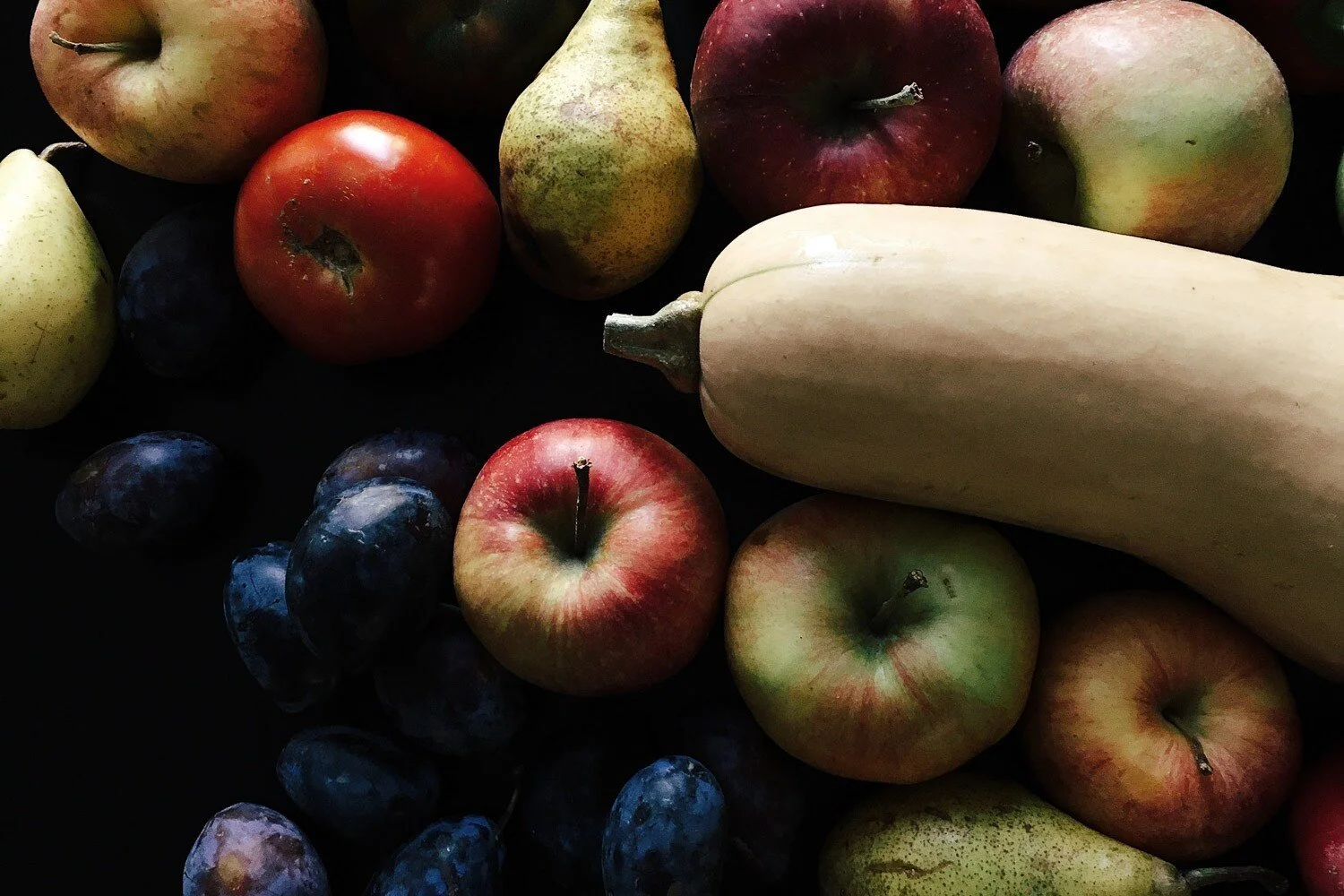Complete Guide to the AIP and Low Oxalate Diet
For the last month I have been on the AIP elimination diet combined with a low oxalate diet. While both diets are quite restrictive when layered on top of each other, it’s only for a short amount of time (you should be eating as wide a variety of foods as possible for best gut health).
For me personally, I wanted to see if any of my health symptoms improved (especially my joints, even though I don’t think it’s RA) and if so, what foods that I might have been eating aren’t a good fit for me (at least for right now). I also wanted to clean up my diet again (properly) and eat a really anti-inflammatory diet to support my gut healing.
At the start, restricting my diet even more and going from a Paleo and low oxalate approach to now an AIP elimination diet, felt very frustrating, limiting, overwhelming, … But thankfully that didn’t last too long and after about a week of eating that way I felt better than before, my mood improved, and I overall felt a sense of general wellbeing.
I thought it would be worthwhile and valuable to create this resource for anyone who’s on the AIP diet AND the low oxalate diet. The AIP diet is already quite restrictive as it is, so layering the low oxalate diet on top of it can be challenging, intimidating and overwhelming.
I will tell you this: it is hard! There’s no beating around the bush. It is challenging and it’s asking a lot of you. But that doesn’t mean you can’t do it. You can do hard things. I can do hard things.
Also, the first week is the hardest, hands down. It will get easier after that once you find your groove, your taste buds adjust, and your addictions (e.g. sugar addiction) fade and cravings stop. I promise!
I have written before about doing a Low Oxalate Paleo diet - while also challenging, this one provides a few more options and a bit more freedom.
What’s the Low Oxalate Diet?
If you’re reading this and are curious about the low oxalate diet, here’s an introductory post. In summary, oxalates (oxalic acid) are compounds in plants that (especially if you’re dealing with an imbalanced or less-than-optimally-functioning gut) can deposit in the body (anywhere! E.g. joints, skin, kidneys, etc.) and cause health issues.
By lowering our intake of high oxalate foods we can bring down the levels of oxalates in the body until eventually they will be low enough that the body starts releasing stored oxalates from wherever they are being stored and causing problems.
Oxalates are like tiny crystals with sharp edges, so you can imagine the havoc and pain they can cause when they deposit in the body.
What’s the Autoimmune Paleo Protocol (AIP diet)?
The AIP diet is an anti-inflammatory (elimination) diet that can help manage and reverse autoimmune issues and chronic disease. It works by removing any pro-inflammatory foods and foods that some of us might be sensitive to, while focusing on nutrient-dense, unprocessed foods instead. It can help restore the gut lining, and ease symptoms and pain.
So, what’s allowed on the AIP elimination diet?
Vegetables (except for nightshades)
All Fruit
All Meat (poultry, red meat, organ meat)
All Fish and seafood
Bone broth, collagen, gelatin
All Healthy fats (e.g. olive oil, coconut oil, avocado, etc.)
All Fermented foods
Herbs and spices (from non-seed sources)
What to remove on the AIP elimination diet:
Dairy
Gluten
All grains
Eggs
Nightshade vegetables
Legumes
Nuts and seeds
Herbs and spices derived from seeds
Coffee and cacao + cocoa
As you can see, it’s pretty basic. Not in a bad way, it’s just a very simple list of things to eat. Back to the way our ancestors used to eat. Vegetables, fruit, unprocessed protein from meat and fish, and some healthy fats. That’s it (more or less).
What can you eat on a Low Oxalate Diet?
While the low oxalate diet doesn’t restrict in terms of processed vs unprocessed food, I won’t include any food items here that are processed. I’ll focus only on whole foods that are also included in the AIP and/or Paleo diet.
While AIP is black and white, the low oxalate diet has some grey areas. It’s a scale with foods ranging from very low oxalate content to extremely high oxalate content. So instead of just listing “vegetables” or fruit” here, we’ll have to go into a bit more detail.
It’s also a constantly evolving science. Foods have to be tested, and their oxalate content can change when retested years later. That’s why you might find confusing and contradicting information when searching online. For the most up to date information, I recommend you join the facebook group and download the latest spreadsheet.
Lastly, since oxalate is a compound found in plants, I won’t list any categories here other than fruit and vegetables. If it’s not on this list, chances are that it’s high in oxalates. For example, most nuts are high or extremely high in oxalates.
Very low and low oxalate foods (i.e. eat freely!)
1. Very low and low oxalate Vegetables
Arugula (rocket)
Bok Choy
Butternut Squash
Broccoli (boiled, water discarded)
Broccoli sprouts
Cabbage
Cauliflower (boiled, water discarded)
Celeriac root
Chayote
Cucumber
Garlic
Kale (but ONLY Lacinto, aka Dino)
Kohlrabi
Lettuce
Mushrooms
Onion (yellow and white)
Pumpkin
Radish greens
Radish, Daikon
Tomato, Cherry (ONLY cherry tomatoes) (I know, technically it’s a fruit…)
2. Very low and low oxalate Fruit
Apples
Avocado (ripe, most varieties)
Banana (ripe)
Blueberries (commercially grown, not wild)
Cherries
Coconut
Grapes
Pear (Bartlett, aka Williams)
Pineapple
Strawberries
Watermelon
3. Very low and low oxalate Herbs and Spices
Cilantro flakes
Ginger extract (note: all extracts are low, even when the actual fruit, vegetable, herb or spice is high in oxalates)
Granulated garlic
Galangal root
Lemongrass
Onion powder
Red chili powder
Red pepper flakes
4. Low oxalate Seeds:
Flaxseeds
Pumpkin Seeds
Sunflower Seeds
Medium oxalate content foods (eat in moderation and limit serving size)
1. Medium Oxalate Vegetables:
Brussels sprouts
Capsicum (bell pepper)
Carrots (boiled, water discarded)
Eggplant (Aubergine)
Fennel
Leeks
Onion (green and red)
Parsnips
Zucchini
2. Medium Oxalate Fruit:
Apricots
Avocado (moderately ripe)
Banana (moderately ripe + unripe)
Blueberries (wild)
Elderberries
Grapes (black)
Golden kiwifruit
Papaya
Pear (Bosc)
Persimmon
3. Medium Oxalate Herbs and Spices
Kaffir lime leaves
Thai basil leaves
So now that we’re clear on we can eat freely on the AIP diet AND the low oxalate diet, we can match them up and layer the two on top of each other.
Since nuts and seeds are out on the AIP diet anyway, we won’t have to worry about that. So all that’s left is to compare and align vegetables and fruit. AIP eliminates nightshades, so we have to take that into account when looking at the low oxalates food list.
Other than that, we can just use the low and medium oxalate foods list to help us see what types of plant foods we can eat.
With that in mind, here’s the final list of everything you can (and should) eat on the AIP and Low Oxalate diet.
What to eat FREELY on the combined AIP and Low Oxalate diet:
1. VEGETABLES to EAT FREELY on the combined AIP and Low Oxalate diet:
Arugula (rocket)
Bok Choy
Butternut Squash
Broccoli (boiled, water discarded)
Broccoli sprouts
Cabbage
Cauliflower (boiled, water discarded)
Celeriac root
Chayote
Cucumber
Garlic
Kale (ONLY Lacinto, aka Dino)
Kohlrabi
Lettuce
Mushrooms
Onion (yellow and white)
Pumpkin
Radish greens
Radish, Daikon
2. FRUIT to EAT FREELY on the combined AIP and Low Oxalate diet:
Apples
Avocado (ripe, most varieties)
Banana (ripe)
Blueberries (commercially grown)
Cherries
Coconut
Grapes
Pear (Bartlett, aka Williams)
Pineapple
Strawberries
Watermelon
3. HERBS and SPICES to EAT FREELY on the combined AIP and Low Oxalate diet:
Cilantro flakes
Ginger extract (note: all extracts are low oxalate, even when the actual fruit, vegetable, herb or spice is high in oxalates)
Granulated garlic
Galangal root
Lemongrass
Onion powder
4. All Meat (poultry, red meat, organ meat)
5. All Fish and Seafood
6. All Healthy Fats (e.g. olive oil, coconut oil, etc.)
7. Fermented Foods (check that it aligns with low oxalate fruits and vegetables)
What to eat in MODERATION on the AIP and Low Oxalate diet:
1. VEGETABLES to eat IN MODERATION on the combined AIP and Low Oxalate diet:
Brussels sprouts
Carrots (boiled, water discarded)
Fennel
Leeks
Onion (green and red)
Parsnips
Zucchini
2. FRUITS to eat IN MODERATION on the combined AIP and Low Oxalate diet:
Apricots
Avocado (moderately ripe)
Banana (moderately ripe + unripe)
Blueberries (wild)
Elderberries
Grapes (black)
Golden kiwifruit
Papaya
Pear (Bosc)
Persimmon
3. HERBS and SPICES to eat IN MODERATION on the combined AIP and Low Oxalate diet:
Kaffir lime leaves
Thai basil leaves
4. Bone broth, collagen, gelatin, etc. (i.e. glycine)
While glycine is highly nutritious and gut-healing, anti-inflammatory, and soothing, it can convert to oxalates in the body. So, this one is a hard decision to make when you’re on the AIP diet and the Low Oxalate diet at the same time. Try to weigh up what’s more important to you right now, where your issues likely lie, and use your best judgement.
I include small amounts of bone broth in my diet each day, but I try not to overdo it for now. Over time I will likely increase the amount of bone broth or collagen. For now, I try to find a balance between gut-healing, anti-inflammatory, and low oxalate intake.
A few important notes:
Consider the sugar content of some of these fruits if you’re trying to keep your sugar intake low (including natural sugar from fruit).
Also, again, be aware that if a food is NOT on this list, do NOT eat it (if you are trying to keep your oxalate intake low), unless you have checked the most up-to-date spreadsheet (you can find it in this facebook group).
For example, sweet potatoes might be a common vegetable that a lot of AIP bloggers include in their recipes, but it is EXTREMELY HIGH in oxalates. Turmeric is also a popular anti-inflammatory spice, which is extremely high in oxalates.
So don’t assume that because it’s part of the AIP diet it will be healthy for YOU. If you’re experiencing oxalate issues, then do your best to avoid those high and extremely high oxalate foods! Even if some of these foods are generally considered healthy (and they’re ok to consume if you’re healthy and not struggling with oxalate problems), avoid them for the time being.
One thing that you can do, whenever you’re eating medium oxalate content veggies and fruit, or just in general with your main meals, is to take calcium citrate (use code NEW20 for 20% off if you’re a new customer, or GOLD60 for 10% off $60USD). This will bind to any excess oxalates and pass them through the stool.
I may have not included certain fruits, vegetables, herbs or spices that you like to eat. That’s either because there is no recent and up-to-date data on the oxalate content of those foods (in which case you’re basically guessing), or because I have focused on the most common and easily accessible food items, excluding things that I don’t consider “every day” or that may be hard to access.
If you wish to look up a certain food for yourself to see whether it has been tested at all (even if 10 or 15 years ago) and what its oxalate content is, join the facebook group and download the spreadsheet. You can then always make your own version/list of foods you like to eat often.
Since you’re restricting a lot of foods already, try to eat as varied as possible (especially when it comes to fruits and vegetables). Include at least (!) 6-8 servings of veggies per day, and try to change them up consistently, so you don’t get stuck in a rut and miss out on some potential nutrients your body needs or that could help you heal. (Organ meats are also great for this!)
Tips to make the AIP Elimination diet and Low Oxalate diet easier:
Keep it simple. Yes, it might be boring at first, basically only eating meat, fish, veggies, some fruit, and healthy fats. But if you can keep your meals simple and not overthink or make it more complicated than it needs to be, you can save yourself a lot of stress and overwhelm in the early days.
Once you’ve become a bit more familiar with this way of eating and more comfortable, you can try to experiment a little and find alternatives and little treats. See below for some examples and ideas.
Easy Recipes to make on the AIP and Low Oxalate diet:
As many other bloggers have said before me, try not to focus too much on whether something is a typical breakfast or a dinner meal. If you’re doing the AIP diet (especially in combination with the low oxalate diet), those fixed ideas have to go out the window! Trust me. Each meal you eat could potentially be breakfast, lunch, dinner or a snack. They’re interchangeable.
Once you’ve gotten on board with that, here are some of my favourite, easy and simple “recipes” to make on the AIP and Low Oxalate diet (seriously! I don’t like to follow recipes, spend more than 30 minutes in the kitchen, or clean lots of dishes afterwards).
AIP and Low Oxalate Snacks and Desserts
A variation of fruit with coconut yoghurt
Fruit and coconut yoghurt
Fruit, coconut yoghurt, topped with toasted coconut flakes
Fruit, coconut yoghurt, and green banana flour mixed into it for some resistant starch
Fruit and coconut cream
Toasted coconut flakes
Coconut banana “cake” (tastes best when eaten with coconut yoghurt)
Apple crumble (with coconut yoghurt)
Breakfast, Lunch and Dinner
A variation of meat, lots of veggies, and healthy fat
One benefit of this diet is that it’s really easy to eat at least 6 servings of different veggies each day. If you start your day with meat and 3 or 4 servings of veggies for breakfast, you’re already halfway there.
As I mentioned, breakfast, lunch and dinner can and should all be interchangeable. Don’t think of breakfast as having to be sweet.
Having leftovers from the day before makes breakfast really easy, quick and effortless - even if you’ve only got some pre-cooked veggies left. You can just add a side of canned salmon or some meat that’s easy and quick to cook, and you’re good to go. Easy!
For meat, you can make your life really easy by buying a roast/rotisserie chicken or canned salmon (see below). Also really handy when you’re travelling and can’t cook or are limited in what you can make.
All of these meals are super simply and all end up in one pan! You might have to boil some veggies separately first, but in the end you can all mix it in one big frying pan. Easy.
Fish, veggies, avocado
“Clean” (i.e. AIP and low oxalate compliant) sausages (I love these chicken sausages if you’re in NZ) with a few different vegetables and sauerkraut
Beef mince stir-fry (add some finely chopped liver for extra nutrients), mix in a teaspoon of bone broth concentrate for flavour
Chicken meatballs, veggies, avocado and/or coconut yoghurt dip
Thai curry (mixed veggies, chopped chicken breast, coconut cream, fresh lemon juice, bone broth, optional: a few thai basil leaves)
Soup
(haven’t got any photos)
I hope this guide to eating a low oxalate and AIP diet simultaneously has been helpful. Comment below if you have any questions. I’d also love to hear your experience if you’ve been on either of these diets, or both of them combined.


